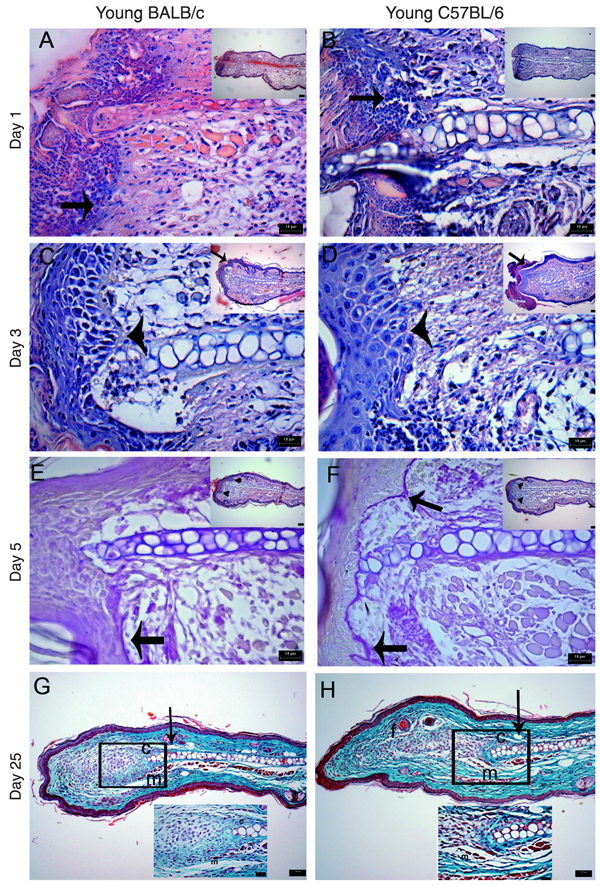Round holes in the ears of MRL mice tend to close with characteristics of regeneration believed to be absent in other mouse strains (e.g., C57BL/6). We evaluated the kinetics and the histopathology of ear wound closure in young (8 weeks old) C57BL/6 and BALB/c mice. We also used middle-aged (40 weeks old) C57BL/6 mice to evaluate the influence of aging on this process. A circular through-and-through hole was made in the ear, photographs were taken at different times after injury and wound area was measured with digital analysis software. The percentages of closed area measured on day 100 were: 23.57 ± 8.66% for young BALB/c mice, 56.47 ± 7.39% for young C57BL/6 mice, and 75.31 ± 23.65% for middle-aged C57BL/6 mice. Mice were sacrificed on days 1, 3, 5, 25, 44, and 100 for histological evaluation with hematoxylin and eosin, Gomori’s trichrome, periodic acid-Schiff, or picrosirius red staining. In young mice of both strains, healing included re-epithelialization, chondrogenesis, myogenesis, and collagen deposition. Young C57BL/6 and BALB/c mice differed in the organization of collagen fibers visualized using picrosirius-polarization. Sebaceous glands and hair follicles regenerated and chondrogenesis was greater in young C57BL/6 mice. In middle-aged C57BL/6 mice all aspects of regeneration were depressed. The characteristics of regeneration were present during ear wound healing in both young BALB/c and young C57BL/6 mice although they differed in intensity and pattern. Greater ear wound closure in middle-aged C57BL/6 mice was not correlated with regeneration.
Wound healing; Regeneration; Scar; Aging; C57BL/6 mice; BALB/c mice


